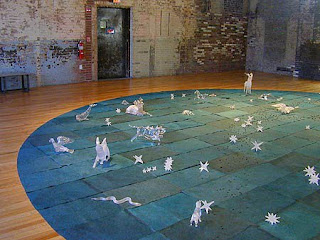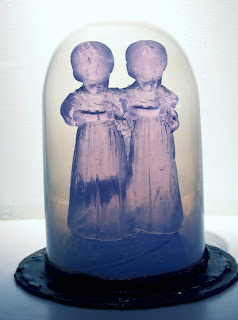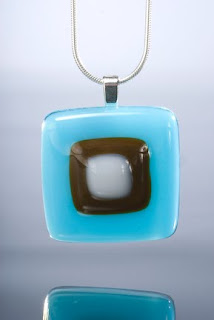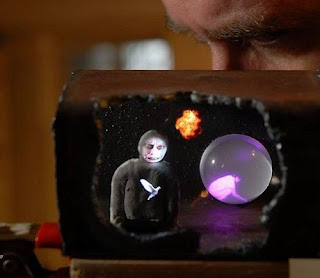>
Susan Lomuto, a Connecticut based artist / writer, established a blog called “The Daily Art Muse” (DAM), showcasing contemporary fine craft.
DAM covers the global landscape of handcrafted artwork with thousands of readers of her weekday posts and content in over 3,000 archived posts. Susan created the site to inspire “artists, designers and collectors worldwide” and the website is frequently used as an educational resource in traditional classroom settings (high school and college) as well as online learning environments.
.
As part of exploring what it takes to be dedicated to art and fine craft, Susan has set out to work as an apprentice for a number of artists across the country. She wants to learn – about art and about the life of an artist; ultimately writing in-depth about the working artist’s life. Many of her experiences will be featured in the Daily Art Muse blog. Susan is working at creating a multimedia experience complete with pictures, video and text.
The apprenticeship project continues this coming week, as she begins a 6-week internship with several DC area artists – including the Washington Glass School.
Said Susan of the process: “I suppose I could have just planned a road trip to visit artists around the country, asking questions, taking lots of pictures, shooting video – but that felt incomplete. Instead, I wanted to develop a solid understanding of the how/why/when/what that makes this a well-lived life, so I am getting my hands dirty as an intern – in many cases jumping out of my comfort zone and into their studios, working in mediums unknown to these hands (like glass), sweeping floors, conditioning clay, gathering supplies – and whatever else they need me to do.”
“My first internship, with jewelry artist Dina Varano in Connecticut, was a quiet one, working in a studio nestled in the woods, away from the distractions of the outside world.
The DC internship promises to be a lively experience in an arts complex that is home to several busy studios and more than two dozen artists. I will make sure I’m ready for the “Toto, I have a feeling we’re not in Kansas anymore” moment once I get there!”
Read more of Susan’s travels and internship – click HERE.
For an update on Susan’s kick-off mtg with the studios – Click HERE
To help fund the arts endeavor, Susan has created a great fundraising project, complete with perks for donations. Click HERE to learn more about perks.
Glass Secessionism
The Internet and social network groups continue to create changes and offer options in art criticism and discussions. A new Facebook group “Glass Secessionism” has sprung up, creating a venue for artwork with a narrative or content-driven aesthetic.
According to the group description: The intent of this group is to underscore and define the 21st Century Sculptural Glass Movement and to illustrate the differences and strengths compared to late 20th century technique-driven glass. While the 20th century glass artists contributions have been spectacular and ground breaking, this group focuses on the aesthetic of the 21st century.

The object of the Glass-Secession is to advance glass as applied to sculptural expression; to draw together those glass artists practicing or otherwise interested in the arts, and to discuss from time to time examples of the Glass-Secession or other narrative work. This movement is modeled after Alfred Stieglitz and the Photo-Secessionists and how they redefined photography.
It was said of Stieglitz” What, then, was this secession from? It was not only from artwork that had gone stale through the copying of Victorian, conventional styles, but more importantly from the dictatorship of the entrenched institutions, galleries, art schools and professional art organizations that enforced or at very least sanctioned copying or imitation.”
 Stephen Paul Day & Sibelle Peretti
Stephen Paul Day & Sibelle PerettiKeep in mind, by Glass Secessionism it is not to say that we as artists are seceding from glass, just from the aesthetic of purely technique, material and process driven sculpture. There is no disrespect meant towards technique driven work. Glass Secessionism is a different branch of the glass tree. Think of them as separate but equal.
Glass Secessionism, with notable exceptions, is focused on 21st century sculptors in glass – and can include mixed and new media. There is a strong movement which begins at the graduate school level, to focus more on the narrative content and less on materiality. The newest emerging artists in glass tend to be much more focused on this direction.
 Christina Bothwell
Christina Bothwell
Glass is finally being allowed to be just another sculptural medium. The fine art world is certainly beginning to take notice, as so many notable fine art galleries and museums (not focused on glass in the past) are allowing and, in fact, promoting work and artists that are glass based.Members are encouraged to post and share their own or others examples of 21st century glass sculpture and open discussion topics regarding this issue. Click HERE to jump to the Facebook group.
Get Ready for the Washington Glass School Holiday Sale!
>

It may be cold and nasty outside – but it is warm & toasty at the Glass School.
The Washington Glass School annual Holiday Sale is coming soon!
So many of the Glass School artists and instructors will have their work available – artwork for sale in many styles and media; beautiful jewelry & craft.

Plus the surrounding artist studios (ceramic studios like Red Dirt & Flux Studio, art studios like Ellyn Weiss’, Alec Simpson’s, Janis Goodman’s) will be open.
The Gateway Arts District will have their Fine Art and Craft Sale along Route 1 / Rhode Island Ave – make it a day of art.
Mark Your Calendar At Once!
Washington Glass School Holiday Sale
Saturday, December 12, 2009
2 – 6 pm
Food, Music, and Glass, Glass, Glass!
The Death of Craft – Whodunnit?
>Craft committed suicide, but it was under the influence of art.
The victim pulled the trigger on itself, detective Garth Clark says, but it was under the influence of Art.
That’s Art, no last name, sometimes known as Fine Art. And though the corpse keeps getting tricked out for public events like the stiff in the movie comedy Weekend at Bernie’s, the actual time of death was, oh, somewhere around 1995.
Garth Clark
This was the premise of a fantastic and provocative lecture that was held at
What is this art envy? Good question.
Surely it has something to do with money.
And surely it has something to do with reputation, with being taken seriously. Artists are simply thought of more highly, as more creative beings, more intellectual, and therefore more important (and, let’s underscore, more worthy of high prices in exchange for their work).
Perhaps it has something to do with escaping an eternal past. “Craft has been overdosing on nostalgia,”
So, he said, somewhere around 1980 craftmakers simply started referring to what they did as art. Museums and other organizations began to drop the word “craft” from their names — sort of like snipping their horse-thieving uncle from the family tree. For a few genuine artists who were trapped by their association with craft — people like Jun Kaneko and Robert Arneson – it was an escape with just cause. For others, it was wishful thinking. “Craft was strongly and sometimes pretentiously influenced by fine art,”
What did
And there might be some truth to that. Still,
What, then, is the difference? When it came right down to it,
And craft’s stress on physicality,
Then again, he says, fine art’s embrace of traditional craft materials has more to do with “postmodernism’s promiscuity” — hardly a marriage of minds. And, he pointed out, in the mid-20th century fine art underwent a more than equal and opposite reaction, “away from craft-based values” and toward conceptualism — a conspicuously idea-driven form of art (even if the ideas are sometimes half-baked) that gets big media play even as it often rejects the entire concept of craftsmanship as old-fashioned and irrelevant. No wonder crafters feel a little loss of self-esteem.
Still, the question remains: What do we mean when we say “craft”? Maybe it’s a little like
One man in the audience last night asked
Either way, there’s something physical about the thing. “Craft is at its best when it is dealing with sensuality,”
So maybe the more interesting question is, What is the relationship between art and craft? Does art require craft? If not, has the art world suffered for its loss?
For the 2-part podcast click HERE and scroll down to 10.16.2008 CraftPerspectives Lecture Garth Clark (Part 1 & 2)
Artomatic Event!
What Makes a Piece of Craft Art Truly Extraordinary?
Sun Jun 14 – 2:00 pm – 4:00 pm
James Renwick Alliance Education Room (4th Floor)
55 M Street, SE, Washington, DC 20003
The Art of Craft
> The skill, discipline and fun of working with glass are all brought together in the upcoming Cobalt Blue Bowl class. The class starts this week – for more info: CLICK HERE
The skill, discipline and fun of working with glass are all brought together in the upcoming Cobalt Blue Bowl class. The class starts this week – for more info: CLICK HERE







